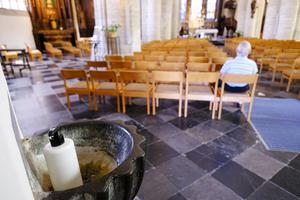Will an Italian Convent be Closed for Opposition to COVID-19 Vaccines?
According to Mother Caterina, there is no other explanation for the closure than the refusal of the five remaining sisters to receive the COVID-19 vaccine.

PERUGIA, Italy — The head of a cloistered Benedictine convent in Perugia, central Italy, has said that her community will be closed because the nuns opposed the COVID-19 vaccine.
Speculation about the closure of the Monastery of Santa Caterina has swirled since the news emerged that the Vatican had conducted an apostolic visitation, or inspection. But the local archdiocese told CNA that it knew nothing about the convent’s possible closure.
In an interview with the website Nuova Bussola Quotidiana, the abbess said that the only reason she was given for the closure was that the five resident nuns did not want to be vaccinated.
“Shortly after mid-February, there was the apostolic visit immediately after the report was sent,” said Mother Caterina. “Now we are waiting for the response from the Congregation for Institutes of Consecrated Life and Societies of Apostolic Life.”
She said that she had learned of the visitation from Cardinal Gualtiero Bassetti, the archbishop of Perugia-Città della Pieve, but only when she went to him to have a document signed. The cardinal said he did not know the reasons for the visitation and had simply been informed that it was taking place.
The apostolic visitor was Mother Cristina Ianni of the Poor Clares of Orvieto.
The Monastery of Santa Caterina is a historic building. It was the seat of the Poor Clares as early as the 13th century and was initially dedicated to St. Giuliana (Juliana of Nicomedia). In 1649, with the transfer of the Benedictine nuns of Santa Caterina Vecchia, it took its current name.
After the unification of Italy in the 19th century, part of the monastery was redesigned. First, it served as a match factory. Today, it houses the offices of the Superintendency of Architectural Heritage.
According to Mother Caterina, there is no other explanation for the closure than the refusal of the five remaining sisters to receive the COVID-19 vaccine.
She said that, in her view, the possible closure was not due to the small number of nuns, although Pope Francis’ 2016 apostolic constitution Vultum Dei quaerere encourages small monasteries to close or federate.
In a press release, the archdiocese of Perugia-Città della Pieve noted that visitations are initiated by the Congregation for Institutes of Consecrated Life and Societies of Apostolic Life. Therefore, nothing could be known for certain “about the imminent closure of the monastery, much less on the fact that the reason for a possible closure is due to the non-vaccination of the nuns present there against COVID-19.”
The archdiocese stressed that Cardinal Bassetti “never intervened on the internal issues of the monastery and not even on issues relating to the vaccination of the nuns.”
The archdiocese denied “journalistic insinuations” that the nuns were being transferred because they refused to undergo vaccination.
The March 24 statement also underlined that the cardinal had not yet received any reports regarding the state of the monastery from a spiritual, liturgical, and economic point of view.
The archdiocese said that the monastery is “owned by the Benedictine Order which has the exclusive right regarding its possible destination or alienation following the closure of the monastery. Therefore any involvement of the archdiocese in this regard is devoid of any foundation.”
The statement also emphasized “how precious the monastic presence is for the life of the Church and how it has always tried to accompany it with paternity and respect and enhance it in all its charismatic richness.”
“Therefore, it can only experience this moment with pain, which instead of building ecclesial unity and communion, wounds it with news and insinuations that do not correspond to the reality of the facts,” it concluded.
- Keywords:
- Benedictine convent
- covid-19
















